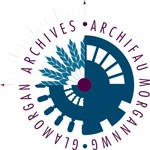Education records make up a significant proportion of our holdings at Glamorgan Archives. This is reflected in our list of 75th accessions, with 8 of these deposits relating to education. Education records are varied and include school board reports, correspondence and policy documentation; education inspectors notes and correspondence; and the records of individual schools, usually comprising admission registers, log books and photographs.
Education records are some of our most frequently requested items in the searchroom. Their relevance extends well beyond the remit of school buildings and lesson plans. Log books in particular can give an invaluable insight into a community, documenting everything from outbreaks of illness, industrial unrest, local reaction to national events and even the weather.
If you have links to a school which has not deposited records at Glamorgan Archives and are interested in finding out about the process, we would be delighted to hear from you. Schools that deposit records retain ownership of the items. The records will be packaged and stored to prevent their deterioration and ensure their survival for future generations. They can then be accessed in our searchroom. We can also arrange for pupils from your school to be involved with the process of cleaning, packaging and cataloguing the records. It is a great opportunity to learn about what we do and about the importance of preserving our documentary heritage.
School groups are welcome to visit the archives, where we offer a variety of workshops linked to the curriculum. A list of topics can be found on our website, and teachers are welcome to contact us to suggest new themes. All school visits are free of charge. To arrange a visit just contact Glamorgan Archives.







